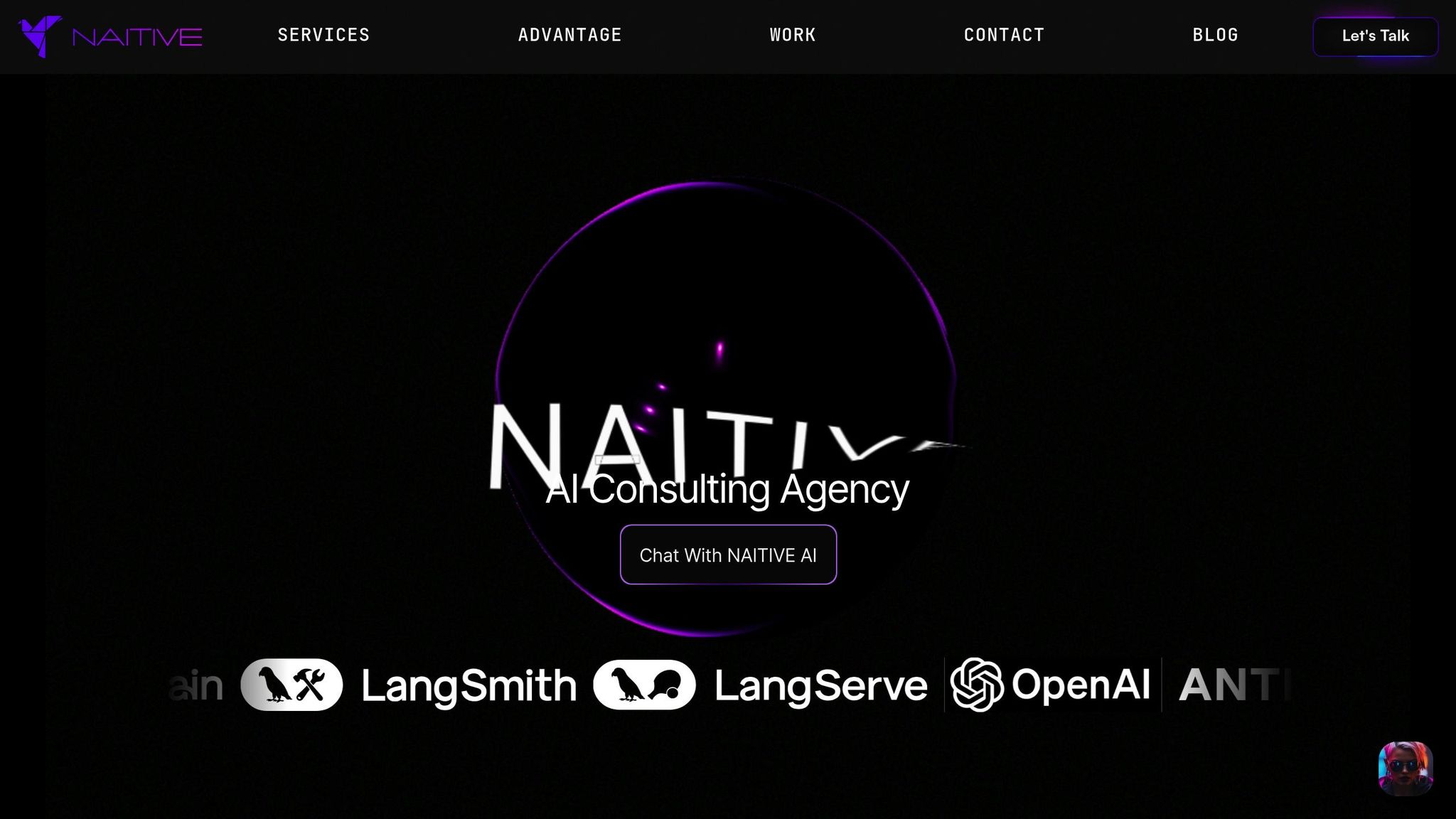How to Reduce Error Rates in Conversational AI
Explore effective strategies to lower error rates in conversational AI, enhancing accuracy, efficiency, and user satisfaction.

Want to improve your conversational AI's accuracy and efficiency? Here's how:
- Lowering error rates boosts results: Companies using refined AI systems report a 67% cost reduction and a 103% efficiency increase.
- Key metrics to track: Measure Word Error Rate (WER), Intent Classification Accuracy, and Information Coverage to identify and fix issues.
- Effective strategies: Regular model updates, expanding training data with real-world examples, and gathering user feedback significantly reduce errors.
- Design smarter systems: Use clear conversation paths, backup plans with human support, and transparent communication to manage user expectations.
- Monitor and test: Track metrics like accuracy, response time, and user satisfaction while conducting automated and manual tests to maintain performance.
How to improve the response accuracy of your AI chatbot
Measuring AI Conversation Errors
To improve AI systems, it's important to measure errors using specific metrics. These metrics help identify areas that need improvement and guide strategies for reducing mistakes.
Speech Recognition Accuracy
Word Error Rate (WER) is a key metric for evaluating how well an AI system converts spoken words into text. A lower WER means better accuracy. WER is influenced by three main types of errors:
- Substitutions: When the system replaces a spoken word with the wrong one.
- Deletions: When the system misses a word entirely.
- Insertions: When the system adds a word that wasn’t spoken.
User Intent Detection
Understanding user intent is critical for delivering relevant responses. AI systems often use classification techniques to determine what users want. Key metrics for evaluating intent detection include:
- Intent Classification Accuracy: Measures how often the system correctly identifies what the user intends.
- Confidence Scores: Reflects how certain the system is about its interpretation of a user’s request.
- False Positive Rate: Tracks how often the system incorrectly assumes it has understood the user’s intent.
These metrics highlight areas where the system may misinterpret user input, helping to guide retraining or data adjustments.
Information Coverage
Information coverage ensures the AI provides complete and accurate responses. This involves checking how well the system’s knowledge base addresses user queries, verifying the information is up-to-date, and ensuring responses fully answer questions. Regular evaluations help identify and fix any gaps.
Methods to Reduce Errors
Model Updates and Training
Keeping conversational AI models up to date is crucial for improving accuracy and staying aligned with how language and user behaviors evolve. Regular updates help fine-tune performance and address new challenges effectively.
Using AI as a Managed Service (AIaaS) offers a structured way to maintain peak performance. This approach includes:
- Automated performance tracking
- Regular fine-tuning based on real-world interactions
- Early detection of accuracy issues
- Systematic updates to resolve problems
Additionally, expanding the training data can make the system more reliable and better equipped to handle various scenarios.
Training Data Expansion
Broadening the training data allows AI systems to manage a wider range of situations. The goal is to include data that mirrors real user interactions and potential edge cases. This kind of preparation strengthens the system.
To expand training data effectively:
- Incorporate varied conversation examples
- Add specialized terms and industry-specific contexts
- Include regional language variations
- Focus on common errors by logging them for targeted updates
User Feedback Systems
Building strong feedback mechanisms is essential for spotting and fixing recurring issues. These systems gather insights directly from user interactions, helping refine AI performance continuously.
For example, a Voice AI Agent solution saw notable results after implementing feedback-driven improvements:
- 34% boost in customer retention
- 41% rise in customer conversion rates
To get the most out of feedback systems, consider these components:
| Component | Purpose | Impact |
|---|---|---|
| Real-time Tracking | Identifies issues immediately | Speeds up responses to critical errors |
| Satisfaction Surveys | Gathers direct user feedback | Provides insights into user experiences |
| Performance Analytics | Monitors performance trends | Drives data-based optimization |
Error Prevention Through Design
Clear Conversation Paths
Create well-structured paths that help users navigate through different steps smoothly. For instance, NAITIVE AI's meeting scheduling system uses a straightforward process:
- Identify the meeting type (e.g., Google)
- Confirm the participant (e.g., John)
- Validate the time (e.g., 3:45 PM)
- Confirm the date (e.g., tomorrow)
- Finalize the scheduling
These structured steps work alongside strong fallback strategies to handle errors effectively.
Backup Plans and Human Support
An effective support system combines AI's ability to self-correct, automated responses for simpler tasks, and human intervention for more complex problems. This layered approach maintains service quality across different scenarios.
Define clear triggers for when AI needs to hand off to a human, ensure the transition keeps all relevant context intact, and monitor these handoffs to improve the process over time.
Progress Tracking and Updates
Key Success Metrics
To improve your conversational AI system, it's crucial to monitor the right performance indicators. Here are a few to focus on:
- Accuracy: Check how well the system identifies user intent.
- Response Time: Measure how quickly it processes and replies to user inputs.
- Error Recovery: Track how effectively the system detects and fixes errors.
- User Satisfaction: Gather feedback through post-interaction ratings and surveys.
- System Reliability: Monitor uptime and overall consistency.
Use your analytics dashboard to track these metrics in real time. NAITIVE AI includes built-in monitoring tools to help you make quick adjustments when needed.
Once these metrics are set, thorough testing ensures your system hits its performance goals.
Regular Testing
A combination of automated and manual evaluations helps maintain system quality:
- Automated Testing: Run daily tests to check conversation flows, response accuracy, and overall performance.
- Manual Reviews: Conduct weekly reviews of conversation logs to catch edge cases or recurring issues.
- Load Testing: Perform monthly stress tests to ensure the system handles high traffic without losing accuracy or speed.
Setting User Expectations
Clear communication with users can greatly improve their experience. Here's how to manage expectations effectively:
- Transparent Capabilities: Let users know upfront what the AI can and cannot do.
- Progressive Disclosure: Introduce advanced features over time, allowing users to get comfortable with the basics first.
- Visual Feedback: Use cues like typing indicators or progress bars to show the AI is processing their request.
- Error Communication: Acknowledge mistakes clearly and provide alternative solutions when something goes wrong.
NAITIVE AI advises keeping your system's documentation up to date. Notify users of major updates through in-conversation messages or email announcements to keep them informed.
Conclusion
Lowering error rates requires consistent monitoring, ongoing improvements, and thoughtful execution. Success lies in aligning technological capabilities with user needs while consistently improving system performance.
Recent examples highlight notable reductions in error rates. Companies employing structured AI management strategies have seen measurable gains in customer interactions, proving that systematic approaches to error reduction work.
To reduce errors in conversational AI, focus on these key practices:
- Monitor performance metrics regularly
- Update systems frequently based on actual usage data
- Design intelligently to prevent errors before they occur
- Incorporate feedback loops into your strategy
Using these methods, alongside expert advice, can improve the reliability of your AI systems.
Working with NAITIVE AI Consulting Agency

For businesses aiming for proven outcomes, NAITIVE AI Consulting Agency offers customized solutions that apply these strategies effectively. They specialize in building AI systems that maintain high accuracy while scaling operations. Their clients' success stories highlight real-world error reduction and improved AI performance.
NAITIVE's AI as a Managed Service (AIaaS) ensures ongoing optimization and performance tracking, helping conversational AI systems maintain accuracy over time. Their mix of technical know-how and business expertise enables organizations to improve AI performance while keeping errors to a minimum.
The future of error reduction lies in comprehensive solutions that adapt to evolving user demands and advancements in technology. By implementing strong monitoring systems and focusing on continuous improvement, businesses can significantly boost the accuracy and effectiveness of their AI systems.




